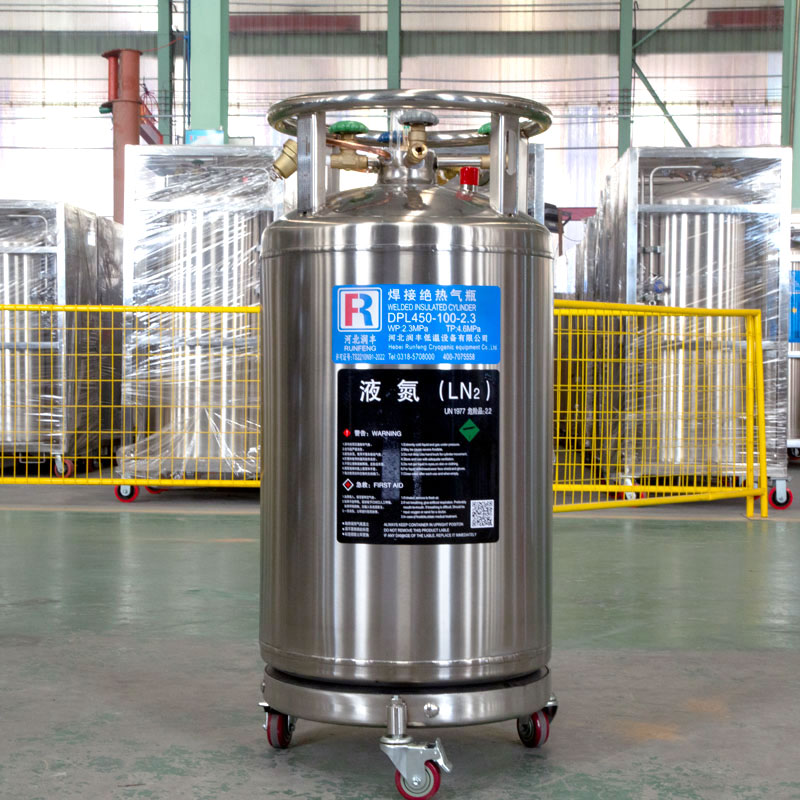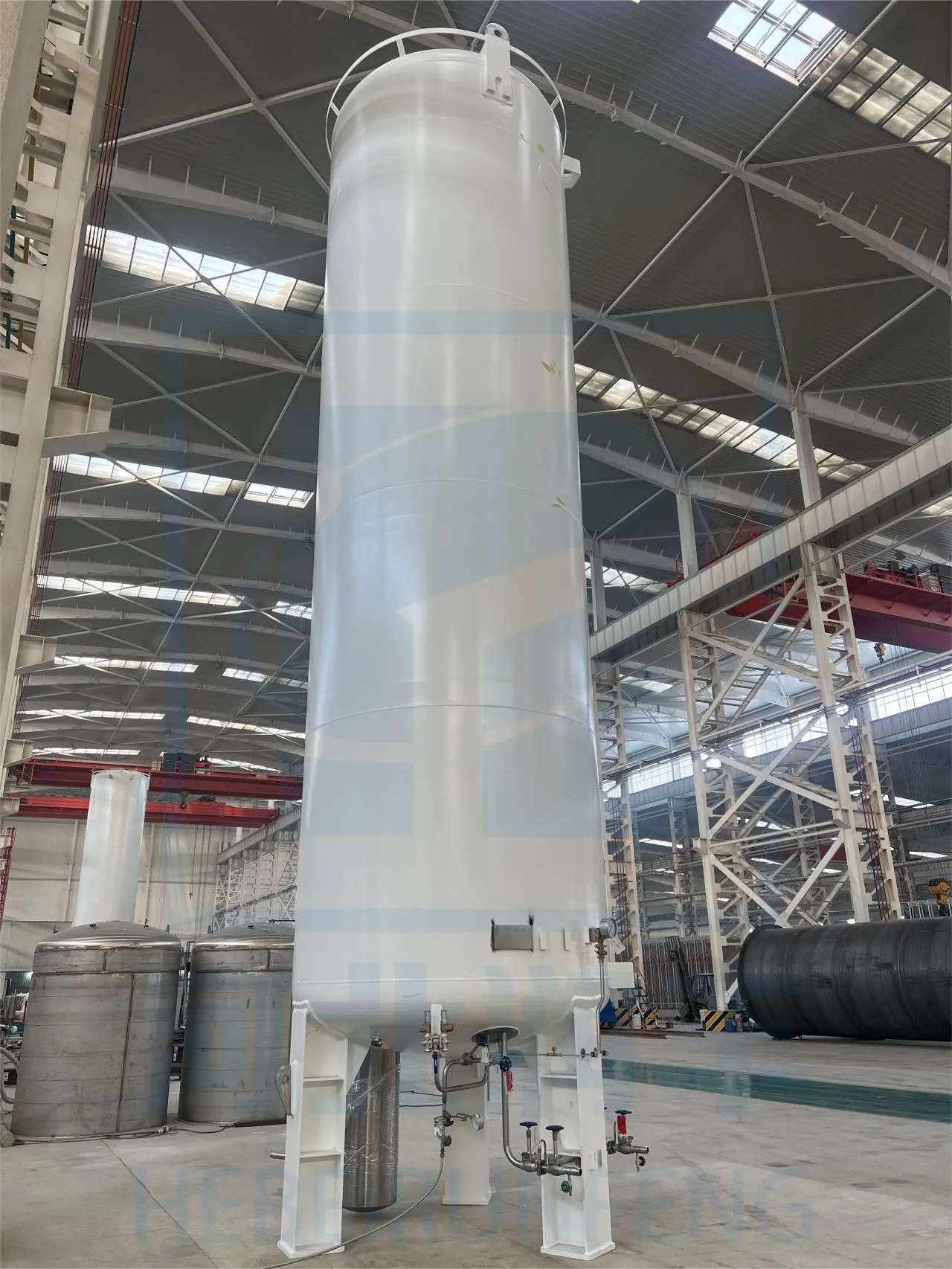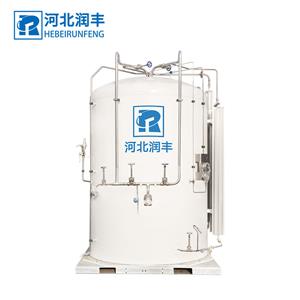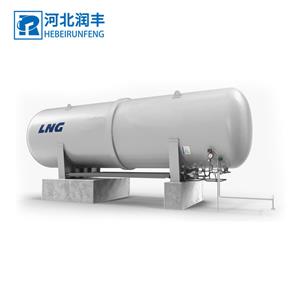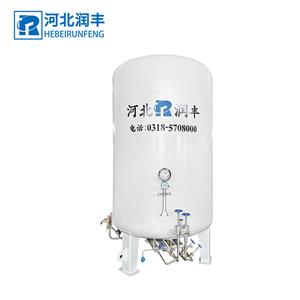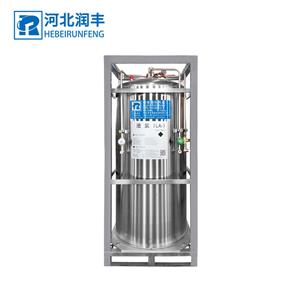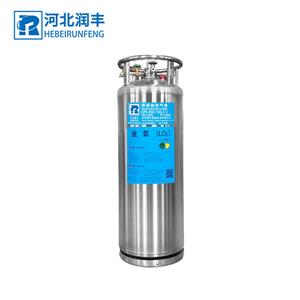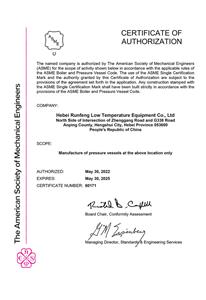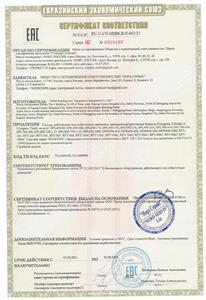The structure of the Dewar Cylinders
The inner and outer shell of the Dewar are made of stainless steel. There is a thermal insulation layer between the inner tank and the outer tank. Qualified and advanced thermal insulation materials ensure high vacuum state and prolongs the liquid storage time accordingly.
A built-in vaporizer is set inside the outer shell to convert cryogenic liquids into gases. The built-in supercharger can increase the pressure to a predetermined pressure and keep it stable during use, achieve the purpose of rapid and stable use. Each vacuum cylinder has a stainless steel ring structure (protective ring) to protect the pipeline and fittings. The protective ring is connected to the cylinder with four brackets, and each bracket is slotted to facilitate the use of trolleys and cranes to carry the gas cylinder.
All operating parts are placed on the top of the dewar cylinders for easy operation. In an independent use environment, the user can effectively control the use through the discharge valve, booster valve, pressure gauge, liquid phase valve, etc.
In order to ensure that the pressure in the inner vessel is below the safety pressure, a safety valve and a rupture disk (bursting disc) are installed on the dewar cylinder.
Uses and Feature of Dewar Cylinder
It is used to transport and store cryogenic liquids such as liquid oxygen, liquid nitrogen, liquid argon, liquid carbon dioxide, LNG, etc. The dewar cylinders are widely used and gradually replacing the traditional gas cylinders.
The cryogenic cylinder is easy to use, safe and reliable, economical and durable. The special features are as follows
1.The support system of the inner tank is made of stainless steel to realize low heat loss and high strength.
2. It is easy to use and can be operated independently by a single person.
3. Store pure cryogenic liquids. Large storage capacity. The gas storage capacity of a DP175 Dewar cylinder is equivalent to over 18pcs of standard high-pressure gas cylinder.
4. The internal pressure of the dewar cylinder will rise during the deactivation phase after filling. The gas cylinder has a high-performance insulation system, and its pressure rise rate is low. Under normal circumstances, there is no need to reduce the pressure through a PRV.
5. The built-in supercharger and vaporizer can realize continuous supply of gas, and there is no need to install an external vaporizer under the designed dosage.
Combination Pressure Regulating Valve: This valve has the dual function of pressure regulation and air conservation. When pressurizing, the cryogenic liquid in the cylinder is converted into saturated vapor by the pressurizing coil, and then returned to the gas phase space at the top of the cylinder through this valve, thereby providing a continuous and stable pressure in the cylinder. When using gas, the gas with too high pressure in the gas phase space at the top of the gas cylinder is preferentially discharged to the outside through this valve to avoid gas loss caused by opening the safety valve due to excessive gas pressure. The solar period is automatic without manual operation.
Caution: Adjusting the top screw of the combined pressure regulator does not accelerate the pressurization speed. Adjusting the top pin of the combined pressure regulator will result to combined pressure regulation. The valve may be damaged under wrong operation method.
Gas Use Valve: This valve is connected to a built-in vaporizer through which vaporized gas can be obtained. It requires a CGA fitting that matches the gas supplied by the container.
Inlet and outlet valve: This valve is used to control the loading and unloading of cryogenic liquid. The user can connect to the CGA connector in front of the valve through a special hose to proceed filling and discharging of gas cylinders.
Booster valve: This valve controls the built-in booster circuit. Open this valve to pressurize the cylinder.
Drain valve: This valve is connected to the gas phase chamber of the cylinder. Opening this valve can release the gas in the cylinder and reduce the pressure.
Pressure Gauge: Shows the pressure inside the dewar cylinder in pounds per square inch (psi) or megapascals (MPa).
Level Gauge: The cylinder level gauge is a floating-rod spring type gauge that uses the buoyancy of the cryogenic liquid to approximately indicate the cryogenic liquid in the cylinder capacity. However, accurate measurement must be weighed.
Safety device: The cryogenic cylinder is designed with a first stage safety valve and a second stage rupture disc to protect the cylinder in case of overpressure. (In case of overpressure) the safety valve will open and its function is to release the pressure caused by normal heat leakage loss of the insulation layer and support, or the pressure rised by accelerated heat leakage after the vacuum of the sandwich layer is broken, or under fire conditions. If the safety valve fails, the rupture disk will open to release the pressure to ensure the safety of the cylinder.
Note: When filling with natural gas, use double safety valves and eliminate the bursting disc in the inner tank. Protection of the enclosure under overpressure conditions is provided by a vacuum plug. If the inner tank leaks (resulting in excessive interlayer pressure), the vacuum plug will open to relieve the pressure. If the vacuum plug leaks, the interlayer vacuum is destroyed. At this point, "sweating" and frosting of the outer shell may occur. Of course, frost or condensation at the end of the tube connected to the cylinder body is normal.
Warning: It is strictly forbidden to pull out the vacuum plug under any circumstances.
Note: Bursting discs can only be used once. The bursting disc must be replaced after it has been used.
